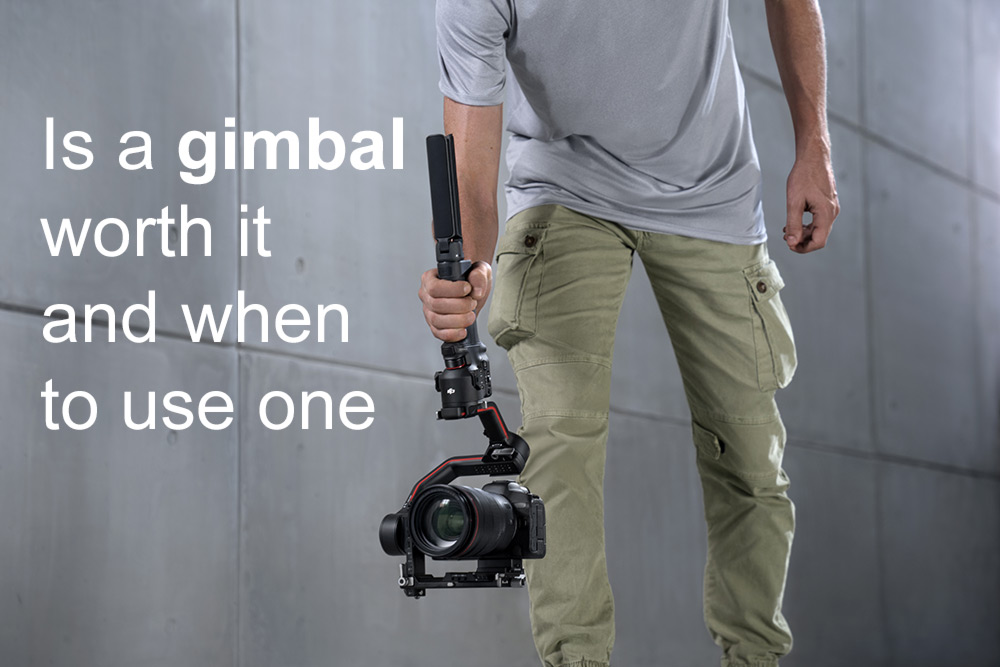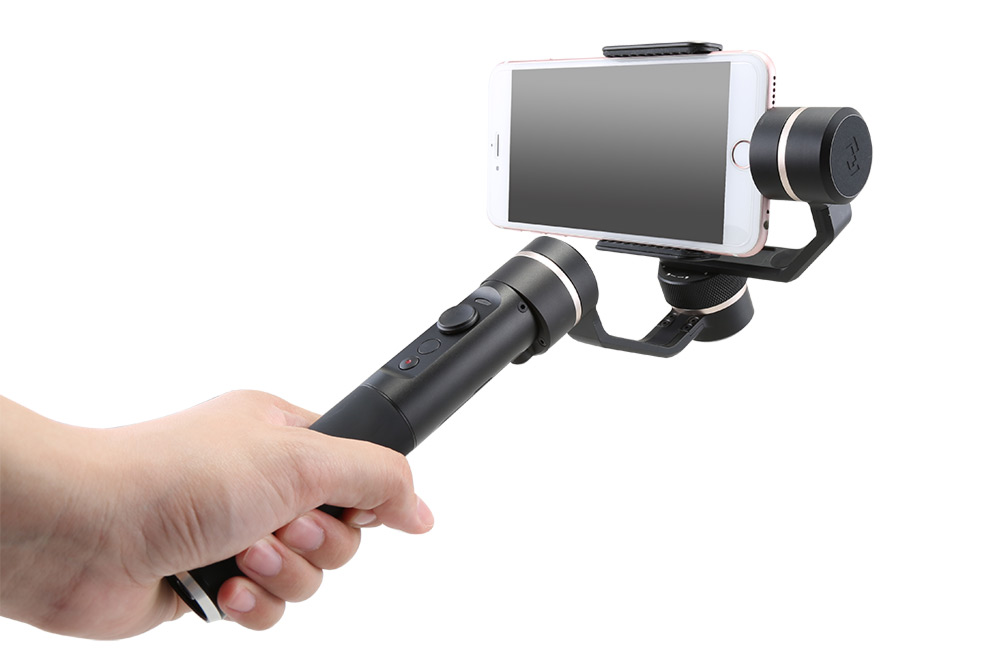- Call us: 01444 237070
- Contact Us
- Stores
- Sign In / Register
-
- Back
- Used Cameras
- Used Accessories
- Used Lenses
- Used Video
- Used Film Equipment
- Used Stock Alert
- Used Blank Test
- Sell or Part Exchange
- Used Clearance
- Recently Added Used Equipment
- Park Picks
- All Used Black Friday Deals
- Faulty
- Trade-In
- Blog
- New in
- Call us
- Contact us
- Stores
- Sign in
- Categories
- Tips & Inspiration
- Reviews
- News
- Events
- Features
- Buying Guides
- Competitions
Is a Gimbal Worth it and When to use one
If you’ve ever been frustrated after filming a scene when playing back shaky, jittery video and wondered how to record smooth, cinematic shots, a gimbal could be just what you need. However it can be difficult choosing the best one for your needs, with so many different options and specs to decide between. In this guide you’ll discover is a gimbal worth it for content creation and when to use one, regardless of shooting with a DSLR, mirrorless camera or a smartphone.

Whether you create travel vlogs, shoot weddings, documentaries and client videos, or simply want to capture more engaging movies of friends and family, a gimbal can help take your productions to the next level. We’ve got you covered with all of the information you need to find your perfect camera gimbal or phone gimbal and capture spectacular videos, whatever your budget or skill level.
What is a gimbal?
A gimbal is a support, which combines mechanical stabilisation, (usually over 3-axis) with sensors, designed to capture silky smooth and stable handheld video, without needing a video tripod. Gimbals can be operated by solo creators and come in all shapes and sizes for different devices, from a smartphone to a DSLR with cinema lens.
All sorts of content creators use a gimbal to record smoother footage, which is incredibly hard to replicate despite the excellent camera body and lens stabilisation available today. Many gimbal stabilisers also offer features such as subject follow focus, remote control via a smartphone or wireless device and preset modes for creating amazing timelapse, hyperlapse or pano content.

Handheld vs gimbal video recording
A gimbal isn’t a one-stop solution for creating professional looking cinematic videos and there are times when shooting handheld vs gimbal mounted is warranted. Handheld shots will usually look more shaky, however this can enhance a gritty scene, is more documentary style, and helps to create tension or drama.
On the other hand, using a gimbal will result in silky smooth footage, which can be enhanced by slow motion (HFR) footage and smooth panning-type or follow shots. This can look spectacular in short sequences, for reveals and during many situations such as weddings, product videos and client movies.
Most videos benefit from using a variety shooting techniques, which might include handheld, tripod mounted and gimbal stabilised. If you’re unsure which will look best, it’s worth recording with and without a gimbal to see which works best for a particular scene.

When to use a gimbal?
When recording on your phone or with a camera, you’ll notice the results tend to look a bit shaky. A camera gimbal or phone gimbal relies on built-in sensors and motors, which combine to stabilise and support your camera, replacing the function of a tripod, whilst adding the ability to move around.
There are numerous types of shots, which are well suited to gimbals, including:
- Reveals, for both tracking and turn-around style
- Dynamic character switching
- POV (point of view) shots
- Telephoto scenes
- A handoff to a second camera
- Push-ins and outs
- Underslung mode
- Moving vehicle shots

What to look for in a gimbal
Aside from gimbal weight and maximum load capacity, it’s useful to consider other features that will enhance your style of video and elevate your productions. Many gimbals include follow focus systems and object tracking, designed to keep the subject in focus whilst the gimbal is moving around.
Other features include smartphone control, built-in screens for easy changes to settings and the ability to use accessories, such as remote control and monitoring with Transmission Modules. This is useful when capturing dynamic sequences like car chases, where the gimbal may be mounted remotely from the operator.

How do I choose a camera gimbal?
There are several factors to consider when choosing the best camera gimbal to buy, with the most important being which primary camera and lens combination you most often use for video. This is because every gimbal has a maximum payload, which determines how much weight it will effectively balance and support.
Some lightweight models like the Zhiyun Crane M2S are incredibly versatile and will support a compact mirrorless camera with shorter lens, as well as a smartphone. If you regularly use a camera with a heavier lens, the DJI RS 3 Mini is a great choice, which is considerably lighter than the DJI RS 3 Pro, yet still supports up to 2kg of equipment effectively. A useful addition to this recently released DJI gimbal is the ability to shoot native vertical videos, which is ideal for social media channels.
Manfrotto has created an ecosystem around the modular Manfrotto 300XM gimbal, which is compatible with the carbon fibre GimBoom and allows you to mount the stabiliser on a tripod, control remotely and much more.
Other factors to consider include battery life, touchscreen control and expansion ports for adding accessories, with options available for every budget.

Which is the best phone gimbal?
There are plenty of choices for smartphone content creators, offering brilliant features like a built-in extending selfie stick, LED lights and compact folded sizes for travel. The DJI Osmo Mobile 6 incudes one of the most comprehensive toolsets, including a built-in extension rod, ActiveTrack 5.0 and one-tap editing. You can also add accessories to create more professional results, such as pro audio with the DJI Mic, and a DJI OM Fill Light Phone Clamp to light your subjects.
Zhiyun’s Smooth 5 Gimbal Combo is another option delivers unique features such as a tripod, LED light and colour filters, which help set this phone gimbal apart from other models.

How to balance a 3-Axis gimbal
It’s essential to balance a 3-Axis gimbal before recording any movies. In this tutorial Gareth explains how to balance a Manfrotto gimbal, which is a similar process for any brand. It’s a little fiddly, but once done you can save your settings and many advanced videographers choose similarly weighted prime lenses in order to reduce balancing time when switching focal lengths.
Gimbal vs Handheld | How To Add Movement to Your Shots
Capturing movies with a gimbal stabiliser makes a huge difference to video smoothness and overall production value, and it’s important to choose the right one for your most common camera and lens combination. Look out for features which are most relevant to your style of content, whether you’re a travel vlogger, wedding photographer or product reviewer for example.
Browse our comprehensive selection of gimbals to suit any budget, camera or phone and take your content to the next level with super-smooth movie quality.
Share this post:
By Nick Dautlich on 21/03/2023
Nick Dautlich
Senior Content Writer and Product Reviewer
Nick Dautlich is the Senior Content Writer and Product Reviewer at Park Cameras, with over 15 years of photography experience. A Sony Imaging Professional and expert reviewer, Nick has worked with major brands such as Canon, Sony and Nikon. His work is also featured on Vanguard World UK’s website, Capture Landscapes, and Shutter Evolve. Nick’s photography includes National Trust projects and magazine covers and he is passionate about landscapes and storytelling. Nick also enjoys hiking and teaching his children about nature. Learn more on his profile page.

Trade in your old equipment
Fast and easy trade in service ensures your old gear is collected efficiently and you are paid quickly! It's very simple to trade in your unwanted photography gear. Just head over to our dedicated Sell or Part Exchange page, fill out the details, and we'll get back to you with an offer for your old gear. Take the cash, or put it towards the cost of your new gear. It's up to you! Find out more
sign up to the newsletter
Keep up to date on the latest photography news, events and offers. Sign up now
